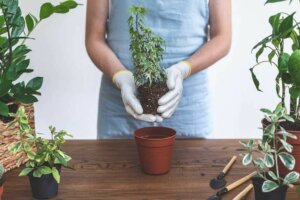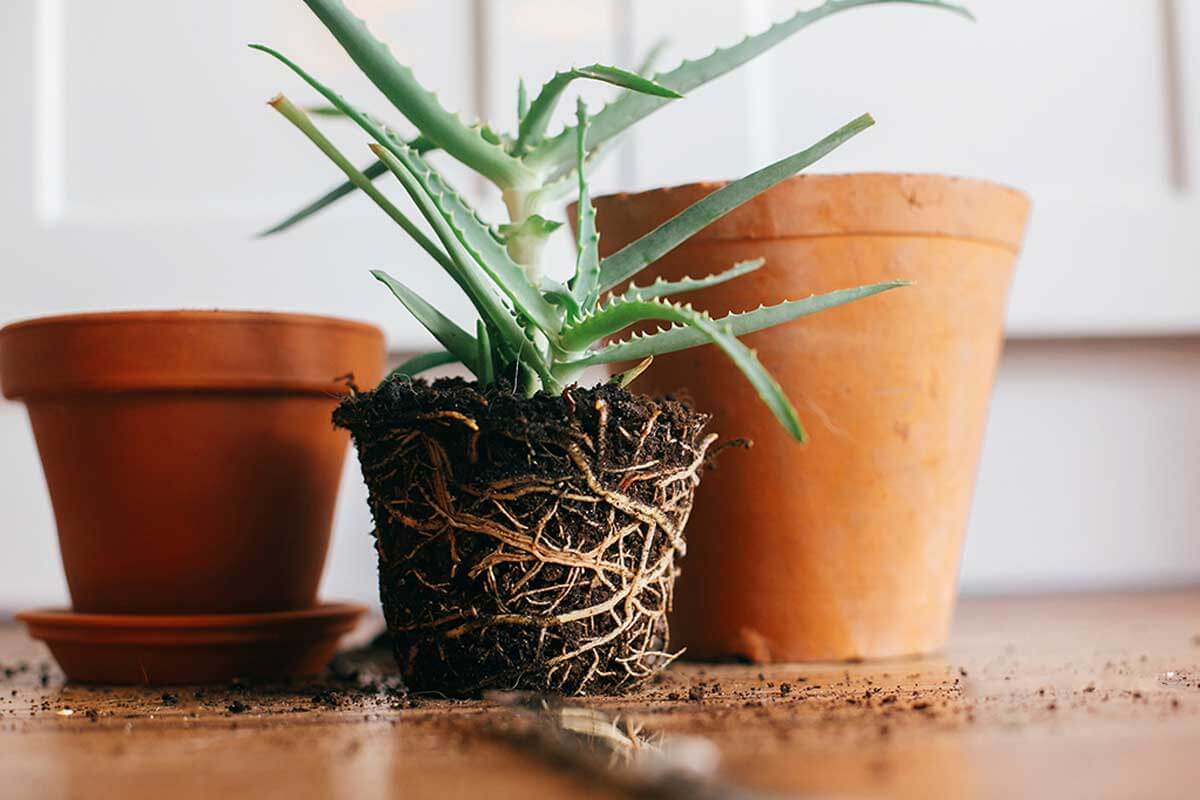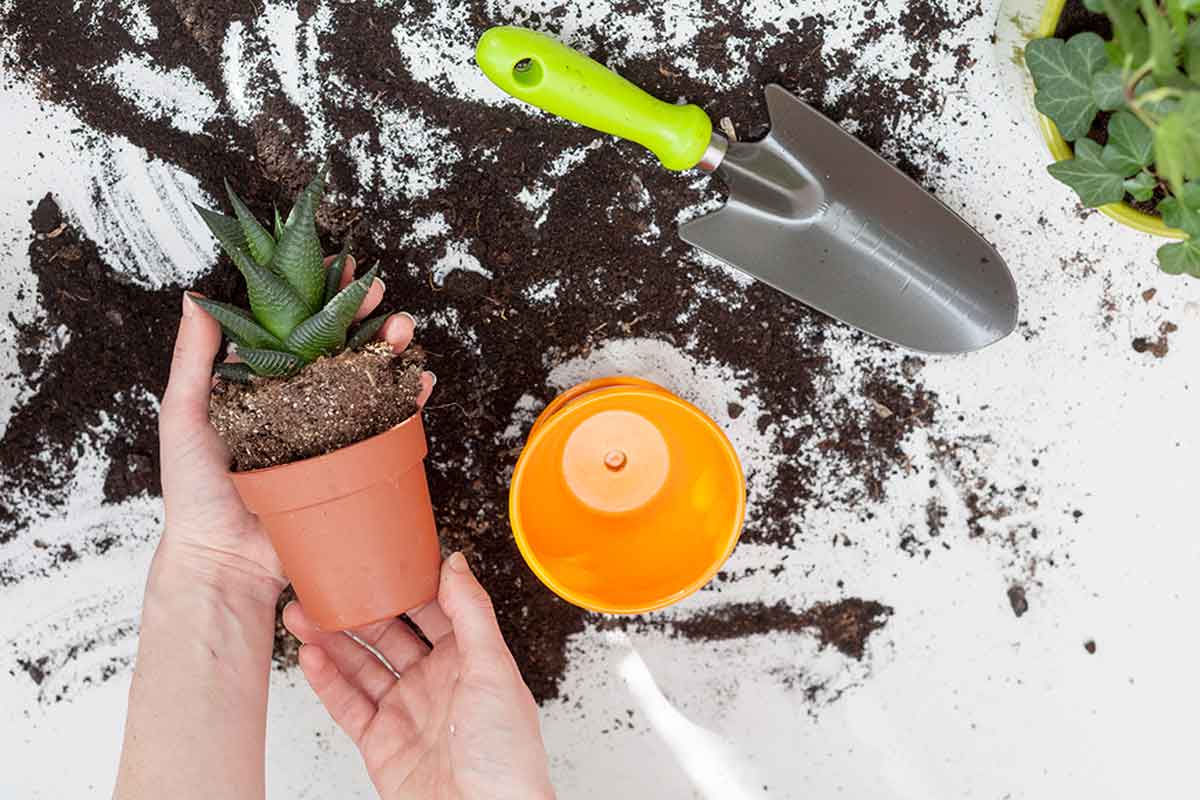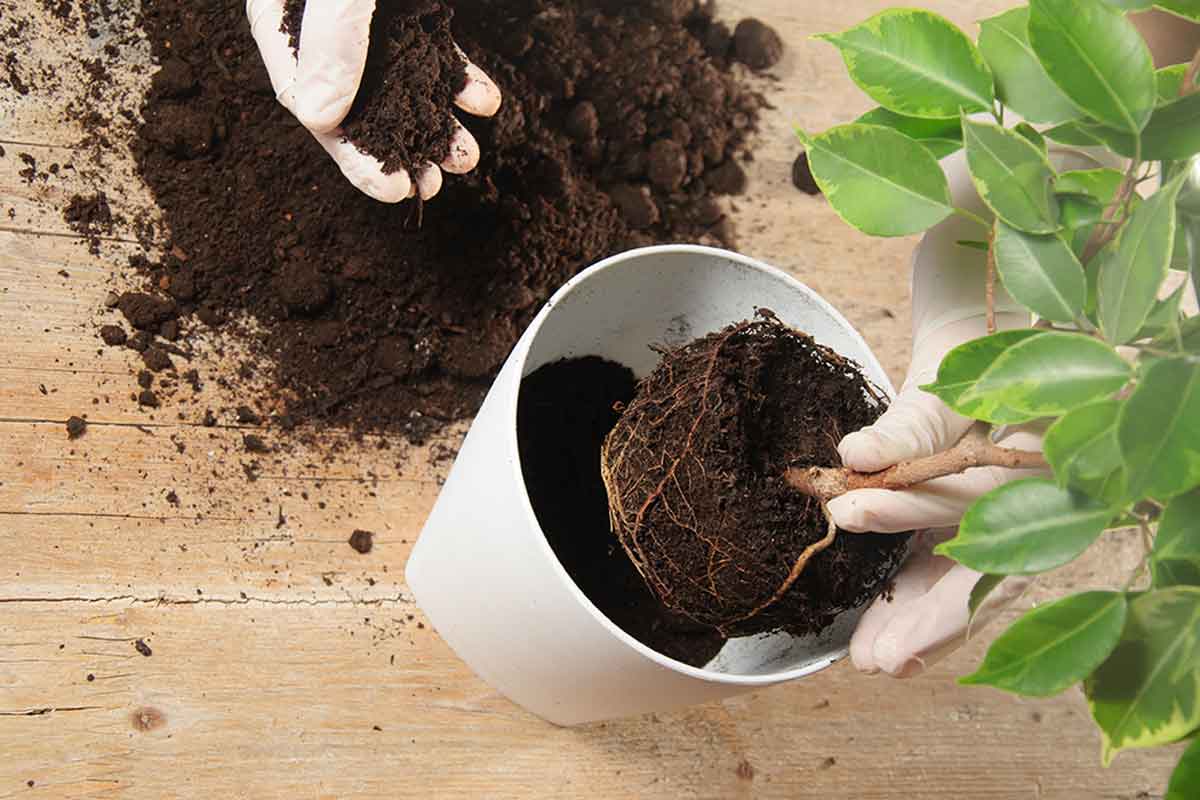Tips for Transplanting a Plant into a New Pot

Those of us who’ve recently discovered our inner gardener may be wondering how to transplant a plant into a new pot. There are some myths about this process that our grandmothers have told us. Equally, we know that, although it seems like a simple task, transplanting a plant requires our attention and affection.
In fact, this is a task that needs to be performed to improve the conditions of the plant. For example, when it’s stopped growing or blooming for no apparent reason. Sometimes this happens because the pot it’s in is too small and prevents it from continuing to develop.
The roots may become very tightly intertwined and won’t take in enough nutrients. If there are a lot of roots, you’ll have to use more than one pot. In addition to making a container change, you may find yourself with some good news, in that it’s time to reproduce your plant.
Read on to discover the process and what’s involved when it comes to transplanting your plant into a new pot.
Learn how to transplant your plant into a new pot

One of the most important things to keep in mind about caring for plants is that most plants need to be transplanted from time to time in order to continue with their optimal growth. As we mentioned, this is usually due to rapid root development and their requirement for more space in order to absorb nutrients.
Keep in mind that the larger the container, the more soil you’ll need. This also means that the plant will have more minerals, vitamins, and organic matter at its disposal. Don’t miss any of our tips on how to transplant a plant into a new pot.
Water your plant before transplanting it into a new pot
Irrigation is vital for any plant and not just because you’ve made the decision to transplant it. Before you transplant it, the conditions of the plant should be optimal, and proper irrigation guarantees much of this aspect.
You have to remember that when you water your plants, the liquid needs to reach the base of the pot. In addition to being vital, this guarantees that the soil is compact when changing the container and the whole process will be much easier.
Transplanting a plant: your new pot needs to be bigger
The next thing to consider when you want to transplant a plant into a new pot is that the new container is at least twice the size of the previous one. This will ensure that the roots grow freely and better absorb nutrients from the soil.
Although the plant is relatively small, don’t skimp on the size of the pot because the plant will eventually grow larger. Equally, over time, the substrate will become more compact and you’ll need to add to it and keep it topped up.
Now, it’s best to use compost in your new pot and, you can buy this in specialized stores. This type of substrate is free from bugs, fungi, and other microorganisms that are present in garden soil. If you do use garden soil, it could be a trigger for your plant to develop a disease.
To remove the plant, turn the pot upside down

To transplant the plant in the best way, hold it with one hand and with the other, hold the top part allowing the plant to protrude through your fingers. Then, when it’s secured, turn the pot upside down and tap it gently so that it’s compact and comes out completely.
If the roots are very tightly knotted, you may need to consider breaking the container to remove it. Equally, if this is the only viable option, wear gloves and protective goggles to ensure that the clay or porcelain shards don’t injure you. Don’t forget to check for debris inside the earth or the roots and make sure you remove it.
Take the plant to its new pot
By this time you should already have your new pot prepared and filled with soil. Make a hole in the center of the soil and place the roots of the plant inside. Begin to push down on the soil so that it’s very compact and if necessary, add more, so that the plant is well-rooted.
If the soil from the first pot is in good condition, feel free to mix it up a bit and allow the roots to retain some of it. The next step is to add water so that the plant has enough liquid and is comfortable in its new space.
Don’t be in a hurry! Your plant will grow at its own pace

Just because you’re repotting a plant to a larger pot doesn’t mean that it’ll grow faster. You must be patient and guarantee all the factors that it needs to grow, such as water, the amount of indirect or direct light that it requires, fresh air, compost, and fertilizer.
Transplanting a plant: light is important
Remember that after transplanting your plant to its new pot, it’ll need light. But be careful, don’t put it in direct sunlight straight away! You must contemplate the specific needs of the species and make it a smooth transition. Don’t forget that your plant is starting an important adaptation process.
So, there you go! That’s how easy it is to transplant a plant into a new pot! Take your time and do it with love. Your plant will thank you for the time you’ve dedicated and will reward you with beautiful blooms.
Those of us who’ve recently discovered our inner gardener may be wondering how to transplant a plant into a new pot. There are some myths about this process that our grandmothers have told us. Equally, we know that, although it seems like a simple task, transplanting a plant requires our attention and affection.
In fact, this is a task that needs to be performed to improve the conditions of the plant. For example, when it’s stopped growing or blooming for no apparent reason. Sometimes this happens because the pot it’s in is too small and prevents it from continuing to develop.
The roots may become very tightly intertwined and won’t take in enough nutrients. If there are a lot of roots, you’ll have to use more than one pot. In addition to making a container change, you may find yourself with some good news, in that it’s time to reproduce your plant.
Read on to discover the process and what’s involved when it comes to transplanting your plant into a new pot.
Learn how to transplant your plant into a new pot

One of the most important things to keep in mind about caring for plants is that most plants need to be transplanted from time to time in order to continue with their optimal growth. As we mentioned, this is usually due to rapid root development and their requirement for more space in order to absorb nutrients.
Keep in mind that the larger the container, the more soil you’ll need. This also means that the plant will have more minerals, vitamins, and organic matter at its disposal. Don’t miss any of our tips on how to transplant a plant into a new pot.
Water your plant before transplanting it into a new pot
Irrigation is vital for any plant and not just because you’ve made the decision to transplant it. Before you transplant it, the conditions of the plant should be optimal, and proper irrigation guarantees much of this aspect.
You have to remember that when you water your plants, the liquid needs to reach the base of the pot. In addition to being vital, this guarantees that the soil is compact when changing the container and the whole process will be much easier.
Transplanting a plant: your new pot needs to be bigger
The next thing to consider when you want to transplant a plant into a new pot is that the new container is at least twice the size of the previous one. This will ensure that the roots grow freely and better absorb nutrients from the soil.
Although the plant is relatively small, don’t skimp on the size of the pot because the plant will eventually grow larger. Equally, over time, the substrate will become more compact and you’ll need to add to it and keep it topped up.
Now, it’s best to use compost in your new pot and, you can buy this in specialized stores. This type of substrate is free from bugs, fungi, and other microorganisms that are present in garden soil. If you do use garden soil, it could be a trigger for your plant to develop a disease.
To remove the plant, turn the pot upside down

To transplant the plant in the best way, hold it with one hand and with the other, hold the top part allowing the plant to protrude through your fingers. Then, when it’s secured, turn the pot upside down and tap it gently so that it’s compact and comes out completely.
If the roots are very tightly knotted, you may need to consider breaking the container to remove it. Equally, if this is the only viable option, wear gloves and protective goggles to ensure that the clay or porcelain shards don’t injure you. Don’t forget to check for debris inside the earth or the roots and make sure you remove it.
Take the plant to its new pot
By this time you should already have your new pot prepared and filled with soil. Make a hole in the center of the soil and place the roots of the plant inside. Begin to push down on the soil so that it’s very compact and if necessary, add more, so that the plant is well-rooted.
If the soil from the first pot is in good condition, feel free to mix it up a bit and allow the roots to retain some of it. The next step is to add water so that the plant has enough liquid and is comfortable in its new space.
Don’t be in a hurry! Your plant will grow at its own pace

Just because you’re repotting a plant to a larger pot doesn’t mean that it’ll grow faster. You must be patient and guarantee all the factors that it needs to grow, such as water, the amount of indirect or direct light that it requires, fresh air, compost, and fertilizer.
Transplanting a plant: light is important
Remember that after transplanting your plant to its new pot, it’ll need light. But be careful, don’t put it in direct sunlight straight away! You must contemplate the specific needs of the species and make it a smooth transition. Don’t forget that your plant is starting an important adaptation process.
So, there you go! That’s how easy it is to transplant a plant into a new pot! Take your time and do it with love. Your plant will thank you for the time you’ve dedicated and will reward you with beautiful blooms.







